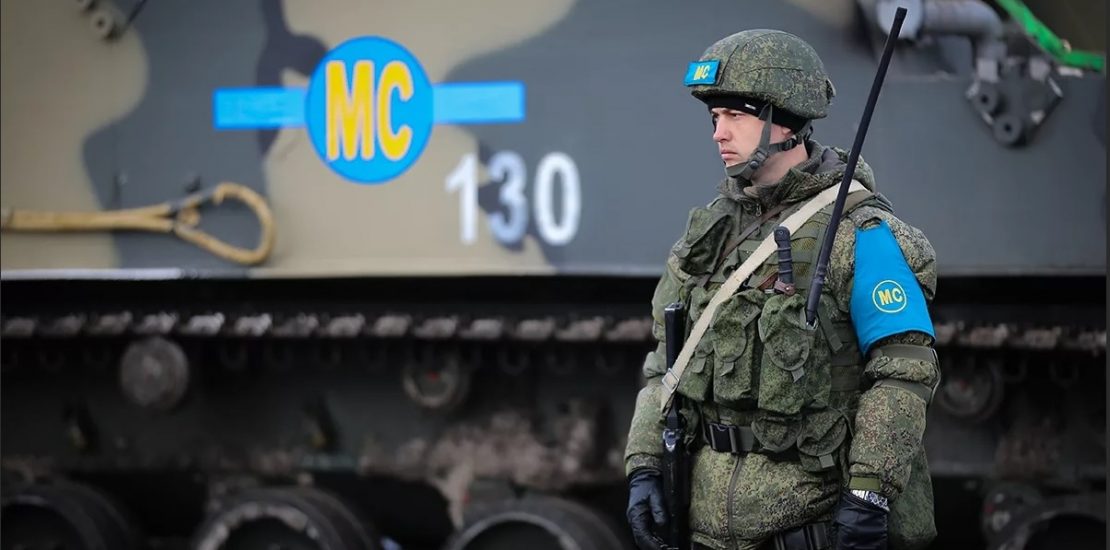- 20 August, 2021
- Foreign Policy

We are approaching the tenth month following the trilateral statement signed between the leaders of Armenia, Russia and Azerbaijan on November 9, 2020, which ended 44-day war in Artsakh.
In addition to the cessation of hostilities, the statement had a number of other provisions, some of which have not yet been implemented or have been partially implemented.
About 40 days after the signing of the trilateral statement on December 22 last year, the Union of Informed Citizens referred to the implementation of these provisions, and in this article we will address the changes that have taken place since then.
The 9 clauses of the statement
The trilateral statement signed on November 9, 2020 consisted of the following 9 clauses.
1․ A complete ceasefire shall be established and all hostilities shall be stopped in the Nagorno-Karabakh conflict zone as of 00:00 Moscow time on November 10, 2020, and Parties shall remain at their current positions.
2․ Aghdam region shall be returned to the Republic of Azerbaijan until November 20, 2020.
3․ Peacekeeping troops of the Russian Federation shall be deployed along the line of contact in Nagorno-Karabakh and along the Lachin corridor, including 1,960 servicemen with firearms, 90 armored personnel carriers, 380 units of motor vehicles and special equipment.
4․ The peacekeeping troops of the Russian Federation are being deployed in parallel with the withdrawal of the Armenian armed forces. The peacekeeping troops of the Russian Federation shall stay there for a period of 5 years, with automatic extension for the next 5-year periods, if none of the Parties declares of its intention to terminate the application of this provision 6 months before the expiration of the preceding period.
5․ A peacekeeping center shall be deployed to control the implementation of the agreements.
6․ The Republic of Armenia shall return the Kelbajar region to the Republic of Azerbaijan by November 15, 2020, and the Lachin region by December 1, 2020. The Lachin corridor (5 km wide), which will provide for communication between Nagorno-Karabakh and Armenia and at the same time will not affect the city of Shushi, shall remain under the control of the peacekeeping troops of the Russian Federation. A plan for the construction of a new route along the Lachin corridor shall be determined within the next three years, providing communication between Nagorno-Karabakh and Armenia, with the subsequent redeployment of Russian peacekeeping troops to protect this route. The Republic of Azerbaijan shall guarantee traffic safety for citizens, vehicles and goods in both directions along the Lachin corridor.
7․ Internally displaced persons and refugees shall return to Nagorno-Karabakh and adjacent areas under the control of the Office of the UN High Commissioner for Refugees.
8․ An exchange of prisoners of war, hostages and other detained persons and bodies of the dead is to be carried out.
9․ All economic and transport links in the region shall be unblocked. The Republic of Armenia guarantees the safety of transport links between the western regions of the Republic of Azerbaijan and the Nakhichevan Autonomous Republic with a view to organizing the unimpeded movement of citizens, vehicles and goods in both directions. Control over transport communication is exercised by the Border Guard Service bodies of the FSS of Russia. In addition, the Parties agree that the construction of new transport communications linking the Nakhichevan Autonomous Republic with the western regions of Azerbaijan shall be provided.
The current situation
Thus, about ten months after the statement of November 9, only the clauses concerning the territorial concessions by the Armenian side were completely fulfilled. In particular, according to the statement, the Armenian forces left the regions of Aghdam, Kelbajar and Lachin. The provisions referring to the deployment of Russian peacekeepers along the line of contact in Artsakh and the corridor connecting Armenia and Artsakh through the Lachin region under their control were implemented.
However, the situation is completely different in cases when the obligations concern not only Armenia but also Azerbaijan.
In particular, in violation of Article 8 of the trilateral statement, according to which an exchange of prisoners of war, hostages, other detainees and the bodies of the dead was to be carried out, Azerbaijan still holds a certain number of Armenian prisoners of war, bringing baseless charges against them and initiating fabricated criminal cases. Despite numerous calls from the international community, Azerbaijan, in fact, has repeatedly delayed and complicated the process of returning Armenian captives since the ceasefire was established, making it a subject of bargaining and speculation on other issues. In particular, some Armenian captives returned to their homeland only after Armenia handed over maps of mined areas to Azerbaijan.
Azerbaijan has an equally destructive approach in terms of maintaining the ceasefire. On both the Armenian and Artsakh borders, the Azerbaijani side has been regularly resorting to provocations, and peacekeepers stationed in Artsakh reported on August 11 that Azerbaijan had violated the ceasefire by using strike drones.
It is noteworthy that against the background of Azerbaijan’s territorial threats against Armenia, the implementation of Clause 9 of the trilateral statement has actually been frozen for quite some time.
As it is known, a trilateral meeting of the leaders of Armenia, Russia and Azerbaijan took place in Moscow on January 11 of this year, during which a joint statement was adopted on unblocking all economic and transport links in the region, a trilateral working group of deputy prime ministers led by expert subgroups was to be established to develop and present steps and measures to be taken to unblock the transport links.
And although the working group was established and even had a meeting, its activity has not yielded any results yet. Instead, when Azerbaijan infiltrated into the Armenian territory in the Syunik and Gegharkunik regions in May of this year, it began to actively circulate the idea of the so-called Zangezur corridor, through which Azerbaijan would be connected with Nakhichevan and, consequently, with Turkey.
The Armenian side strongly opposes the provision of a corridor with a special status to Azerbaijan, insisting that the unblocking of transport links of the region should take place through road and railway infrastructure and border checkpoints. And only on August 17 it became known that another meeting of the working group chaired by the Deputy Prime Ministers of Armenia, Russia and Azerbaijan had taken place, during which the parties had discussed the prospects of restoring transport communications in the South Caucasus and ” the further course of the work within the framework of the statement of the Prime Minister of the Republic of Armenia, the President of the Russian Federation and the President of the Republic of Azerbaijan of January 11, 2021.”
As for the other clauses of the trilateral statement, it should be noted that in contrast to our previous article, the situation around Clause 5 of the statement has been clarified, and currently there is a Russian-Turkish peacekeeping center in Aghdam.
However, it is not clear whether the residents of the occupied regions of Artsakh, such as Hadrut and Shushi, will be able to return to their homes.
Thus, it can be stated that Azerbaijan is showing a destructive approach with regard to implementation of the clauses of the statement of November 9, 2020, which are important for Armenia, while the commitments undertaken by Armenia have been fulfilled long ago.
Vahe Ghukasyan
Union of Informed Citizens




